
Barrett Lab
Ananda Martins
Bates Revisited: The origin of wing pattern variation in the Amazon
![]() In my PhD project, I propose to follow in Henry Walter Bates steps, and use whole genome data to test hypotheses about the evolution and spread of new butterfly wing color patterns in the Amazon forest.
In my PhD project, I propose to follow in Henry Walter Bates steps, and use whole genome data to test hypotheses about the evolution and spread of new butterfly wing color patterns in the Amazon forest.
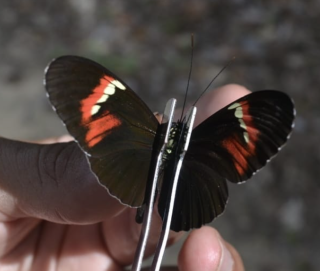 My project will provide a piece of the puzzle about the processes that gave rise to the greatest terrestrial biodiversity spot of the Earth. I focus on the distantly related Heliconius erato and H. melpomene. These butterfly species provide a unique set of resources, including a detailed knowledge of the genetic basis controlling the diversity of color patterns and high quality reference genomes. Thus, I have a unique opportunity to combine genomic data, phenotype, and historical environmental factors that could have influenced the evolution of color wing patterns.
My project will provide a piece of the puzzle about the processes that gave rise to the greatest terrestrial biodiversity spot of the Earth. I focus on the distantly related Heliconius erato and H. melpomene. These butterfly species provide a unique set of resources, including a detailed knowledge of the genetic basis controlling the diversity of color patterns and high quality reference genomes. Thus, I have a unique opportunity to combine genomic data, phenotype, and historical environmental factors that could have influenced the evolution of color wing patterns.
IMAGES by Ananda Martins
To know more, visit Ananda's research website.
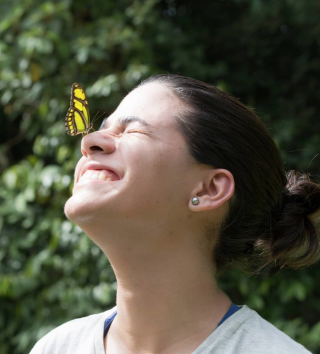
|
I am a Brazilian Ph.D. student in the Redpath Museum & Department of Biology at the McGill University and the Smithsonian Tropical Research Institute. As a graduate student I am interested in the interactions between ecological and evolutionary processes, especially how environments can shape genomic variation in Neotropical butterflies. I am also the co-creator of the Project Following Bates (@followingbates), in which we share some of our team experiences studying the Brazilian Amazon, curiosities, information, people we meet along the way and of course, lots of biology |
Janay A. Fox
Does exposure to predation stress shape guppy behaviour through epigenetics?
Predation pressure is one of the most prevalent selection pressures that prey organisms face. In response, most organisms develop anti-predator defences, especially the adoption of anti-predator behaviours. However, predation pressure varies spatially and temporally making behavioural plasticity important. Epigenetics, gene regulatory mechanisms that alter gene expression without altering the gene expression itself offer a direct link between the environment and the genome that may underpin this behavioural plasticity. I investigate the role of epigenetic mechanisms, namely DNA methylation, in modulating behaviour in response to predation pressure in Trinidadian guppies.
To know more, visit Janay's research website.
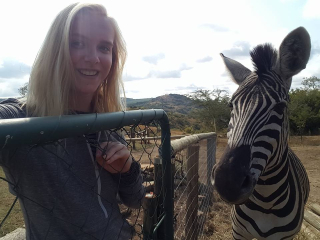
|
Janay completed a B.Sc. Honours in Genetics and a Certificate in Biological Research at the University of Alberta. As an undergraduate she used a candidate gene approach to investigate the genetic basis of boldness in a free ranging population of grey seals under the supervision of Prof. Coltman. She is now studying for a PhD under the supervision of Prof. Rowan Barrett. |
Victoria Marie Glynn
Host-microbe co-evolution as a source of resiliency for Tropical Eastern Pacific corals
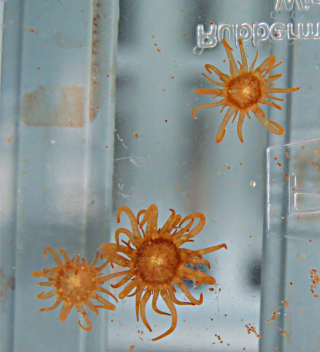 Stressful environmental conditions are becoming more prevalent under climate change, but organisms’ response mechanisms to abiotic stressors are widely unknown. Corals are some of the most threatened organisms, as up to one-third of species risk extinction this century. We can begin to ascertain how corals are able to persist under increasing environmental variability by taking a host-microbe co-evolution approach. Corals are a “meta-organism,” as within a single polyp all six kingdoms and three domains of life are in symbiosis with the host.
Stressful environmental conditions are becoming more prevalent under climate change, but organisms’ response mechanisms to abiotic stressors are widely unknown. Corals are some of the most threatened organisms, as up to one-third of species risk extinction this century. We can begin to ascertain how corals are able to persist under increasing environmental variability by taking a host-microbe co-evolution approach. Corals are a “meta-organism,” as within a single polyp all six kingdoms and three domains of life are in symbiosis with the host.
In considering both the host and its symbionts, my research will explore how the synergy of (1) host genotype, (2) host phenotype, (3) host transcriptional response, and (4) microbiome community dynamics impact coral resilience to environmental stress. I will be scrutinizing these questions using Panama’s Tropical Eastern Pacific as a natural laboratory. Here, the region’s ecologically-dominant coral, Pocillopora damicornis, experiences drastic seasonal fluctuations in temperature, pH, oxygen, salinity, and nutrients, due to intense seasonal upwelling. In combining both controlled aquaria and field experiments, alongside implementing cutting-edge genomics tools, this exceptionally robust coral may provide insights for how other corals can persist in a warmer, high carbon dioxide future.
IMAGE by Victoria M. Glynn
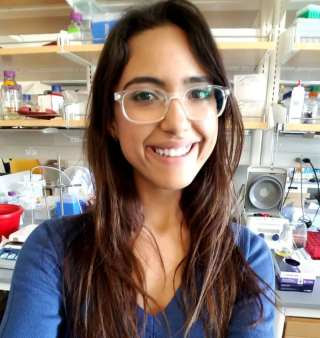
|
I was born in Caracas, Venezuela and raised in Tegucigalpa, Honduras. As a child, I had the privilege to be surrounded with extraordinary biodiversity, spending many of my holidays swimming in the world's second largest coral reef system, the Mesoamerican Barrier Reef. Yet, I also witnessed the destruction of the same ecosystems I treasured, and came to recognize that I had to assume a more active role to preserve my region' natural patrimony. This inspired me to pursue a B.Sc. in Environmental Sciences from the University of California, Berkeley. While at Berkeley, I had the opportunity to be involved in Dr. Jamie Cate's and Dr. Claire Kremen's research groups, where I worked on CRISPR-Cas9 applications in cereal crops and yeast, and songbird health in agricultural landscapes, respectively. Simultaneous to my research work, I discovered a vocation for STEM education and outreach. I earned a minor in Science and Math Education (CalTeach), where I taught culturally-relevant applied science curricula for over 200 hours in K-12 classrooms in California's East Bay, and presented my experience as an underrepresented minority in science, ultimately motivating my students to consider STEM careers. As a Ph.D. student at McGill University, I have continued engaging in research and outreach. I am pursuing a highly interdisciplinary project, where I am applying a molecular lens to the study of coral reef preservation in Panama; my findings will speak to safeguarding neotropical reefs as a whole. I am also actively engaged in STEM outreach with the Redpath Museum, as a representative in the "Equity and Diversity" committee and by co-leading "Public Programming" for the Graduate Association of the Redpath Museum. Lastly, both of these axes are further complemented by my identity as a visual artist. I use my scientific illustrations and photographs to improve and facilitate communication of my research, and to increase public engagement with STEM overall.
|